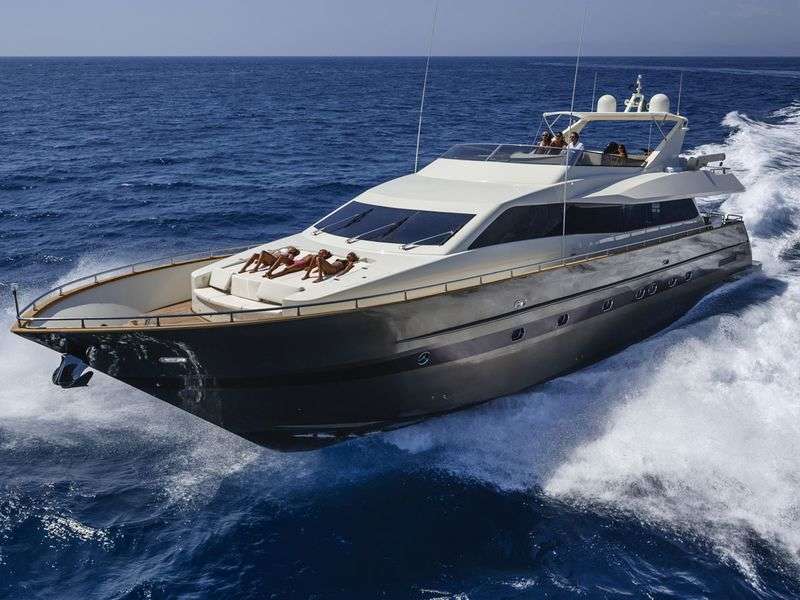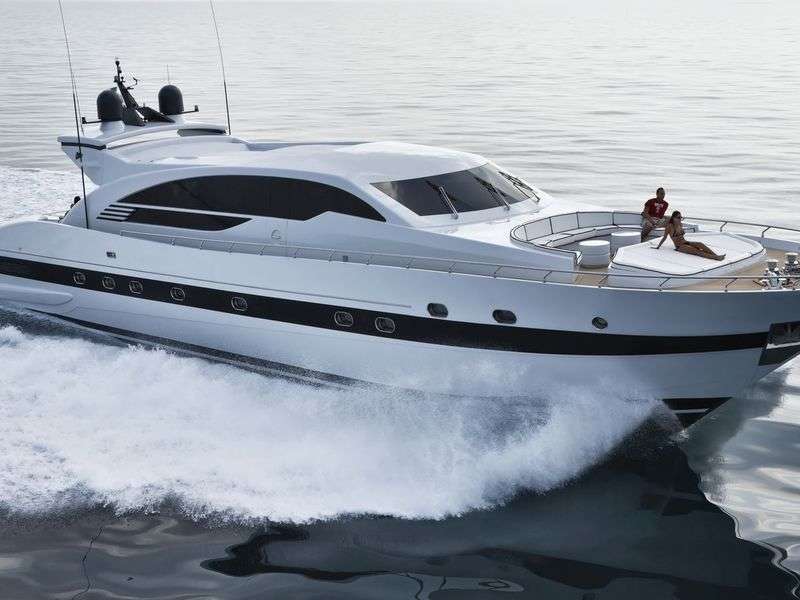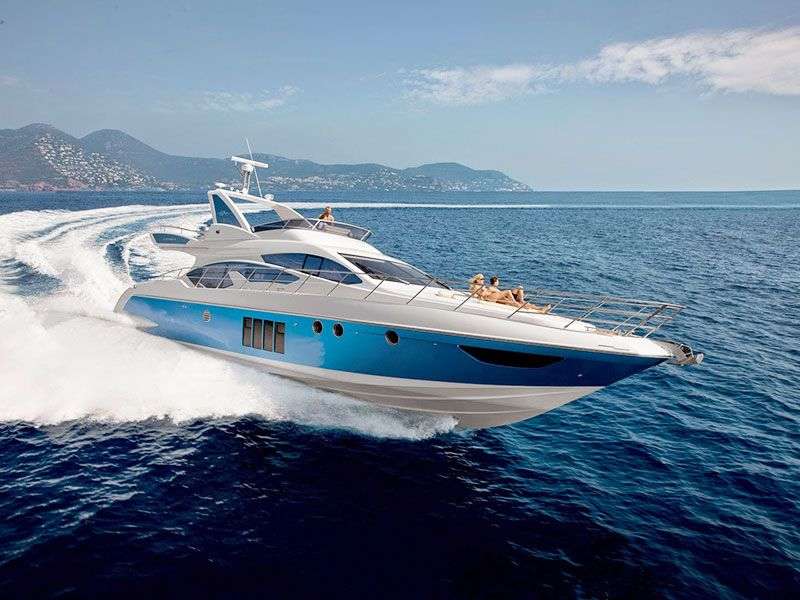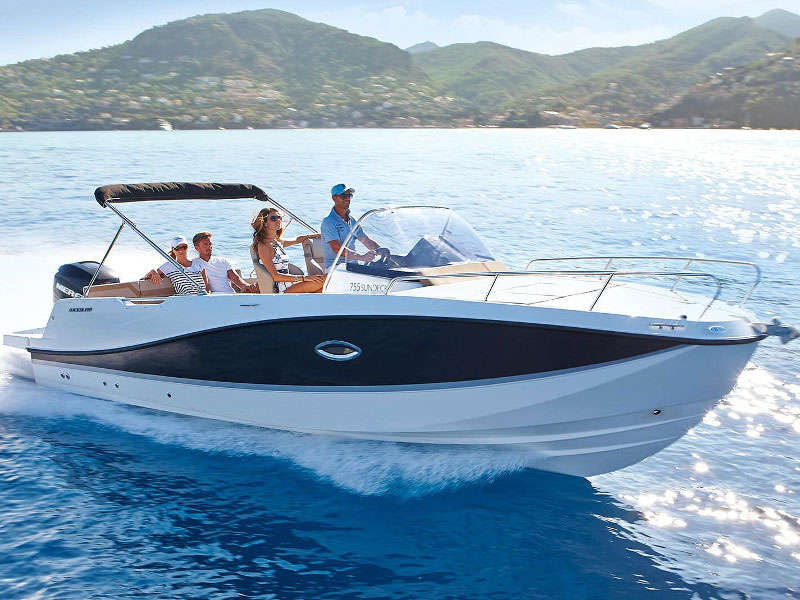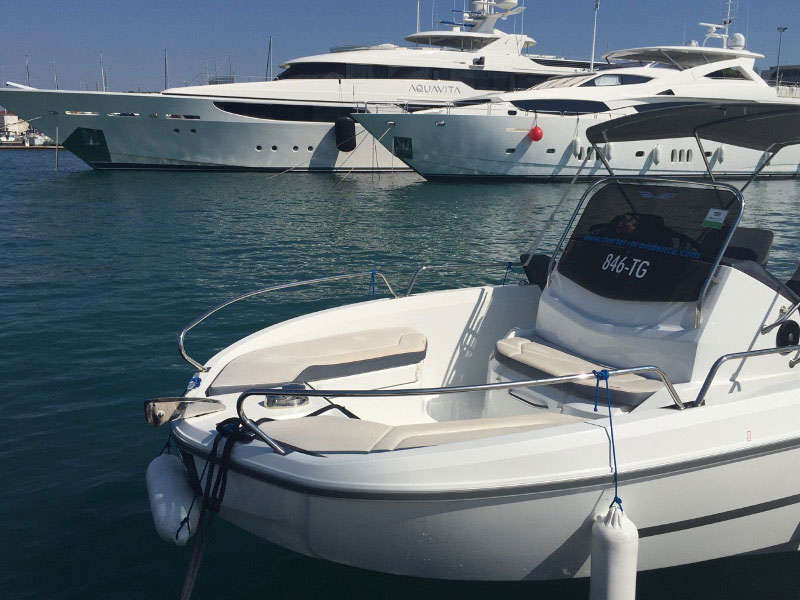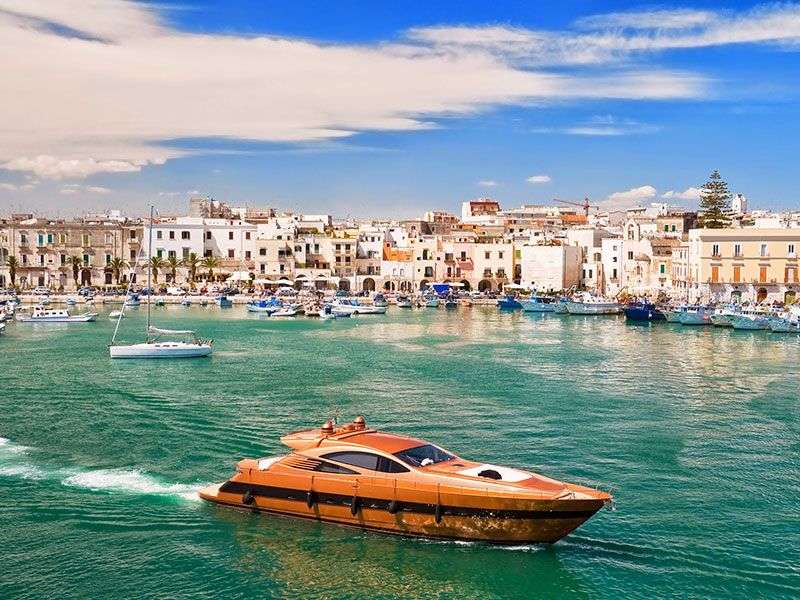There are several types of motorboats and powerboats. There is a wide range of vessels available on the market; smaller ones and super boats, watercrafts built from different materials and driven by different propulsion systems. What is common in these boats is that they are motorized and do not have a sail that uses the wind to push them forward. We will now describe the different types of motorboats and explain what unique characteristics they have.
This article gives you an overview of the following topics:
- Why is motorboating fun?
- Motor boat types: Basic information
- Motor yacht types: The propulsion system of powerboats
- Before you start…
- How to rent a motorboat?
Why is motorboating fun?
Depending on the engine of the boat, we differentiate amongst several motorboats; there are types using the diesel engine, petrol engine or electric engine. Electric engines are becoming more popular these days due to their nearly zero-emission and low noise level. Motorized boats have many advantages. First, electric motorboats glide on the surface of the water smoothly, which is not the case with their loud diesel and petrol-powered counterparts. Skim across the waters with crazy speed and draw the attention of the people sunbathing on the beach, or just enjoy the sunshine yourself peacefully on the deck. Motorboats offer you the opportunity to access parts only available on the sea – you can explore all the hidden gems nature has to offer.
Benefits of renting a boat
One of the great benefits provided by motorboats is that there are several types that you can choose from. Regardless of whether you are an adrenaline junkie or have a large family, you will definitely find the perfect model that satisfies all your needs. Some models can navigate in shallow waters so that you can approach or even dock on a small remote island. As electric engines do not use a combustion system the only source of noise is the rotating mechanism sitting inside, which is not loud at all. Because of the quiet operation, passengers can enjoy their conversations in a calm environment. Besides having a low-noise drive system, electric engines do not produce exhaust gases, so they are environmentally friendly.
Motor boat types: Basic information
We distinguish the front part (bow) and the rear part (stern) of every powerboat and motorboat. Another part is the hull, which practically means the bottom of the boat, and there is also an upper part located above the hull. In addition to the ones mentioned above, every boat has its unique parts that all have a distinctive nautical name. Before delving into the topic of motorboat types, let us take a look at the basic components that constitute motorized vessels.
How are boats made?
The most advanced recreational motorboats are of fibre-reinforced plastic, or in other cases, aluminum. Larger boats such as motorized yachts and mega yachts are made of fiberglass, aluminum, or steel. Manufacturers use a casting mould during production. It is filled with resin amongst other materials. In some other cases, the vacuum is used to remove the excess resin. This is usually stronger and provides for a lighter hull. Fiberglass is extremely strong but needs to be applied in multiple layers for its full potential. This results in extra weight which can influence the performance of the powerboat. In order to solve this problem, manufacturers often insert a foam material between two layers of fiberglass.
Motor yacht types: The propulsion system of powerboats
There are typically five different propulsion systems when it comes to motorboats: straight inboard drives, inboard/outboard drives, pod drives, jet drives, and outboard drives.
Straight inboard drives
The straight inboard drive system consists of a petrol or diesel engine, a metal shaft, and a propeller. The engine is located inside the boat. It is connected to an external propeller via a fixed shaft that is fitted into the hull using a special method. As the engine spins the shaft, the propeller spins as well, which pushes the boat through the water.
Inboard / outboard (sterndrive)
An inboard/outboard system – often referred to as a sterndrive – consists of an engine and an outboard drive unit. The engine sits inside the hull, while the drive unit (consisting of the transmission, steering mechanism and propeller) is mounted externally. When the skipper turns the steering wheel, the entire drive unit turns, which also makes the boat turn.
Pod drives
This relatively new propulsion system, used in recreational power crafts, consists of an inboard engine mounted to a drive unit underneath the boat. Similarly to an inboard/outboard system, the transmission, propeller, and steering mechanisms are all part of the drive unit. Unlike inboard/outboard setups, pod drives are typically mounted on the bottom of the boat’s hull. They are able to swivel independently, which provides for superior vessel control.
Jet drives
The jet drive systems use an inboard engine; they spin a metal impeller inside a large water pump. This pump pushes the yacht forward at great speed by sucking up the water and using it for the process.
Outboard drives
The outboard engine has the propeller, transmission and engine block in a single unit. This is located on the outside of the boat, usually on the transom. Cables and hydraulic rams connect to the outboard to move the boat back and forth.
Motorboat types
Powerboats are available in several shapes and sizes. The smallest recreational boats are vessels such as pod engine boats, inflatable or personal watercraft. Larger recreational vessels include motor yachts and the so-called mega yachts.
Bass boat
Bass boats are typically used for freshwater fishing. They have low freeboard and a flat deck. Bass boats are ideal for fishing on inland lakes and rivers. They are quite expensive due to their special equipment and high-performance engine.
Bay boat
These vessels have a low freeboard, and their history goes back to medieval fishing. They are designed for use in shallow waters and shores, and near the coasts. During construction, it is taken into consideration that these vessels are usually used in saltwater. The boats are 18–24 ft long and are of fiberglass.
Bowrider
Bowriders have an open bow area with a sitting area inside. They are typically 17–30 ft long. Bowriders are usually using the shaft drive or the outboard engine system. They are also regarded as family boats, but can even be used for fishing or watersports. They are a good choice if you are only getting acquainted with cruising, or are preparing for your first sea adventure.
Center console boat
Center console boats are 13–45 ft long. As the name suggests, the steering wheel and the navigation system are in the middle. The open design helps fishermen walk along the deck. This modern construction allows the bow of the boat to emerge from the water when reaching a certain speed.
Cruiser
Cruisers are 21–45 ft long and have a small cabin in the bow. These cabins are usually sleeping accommodations. They are typically large enough to provide room for a small kitchen and several beds.
Cuddy cabin
Cuddy cabin boats have a small cabin and a seating area in their bow. They are usually 22–30 ft long.
Deck boat
Deck boats have a wide beam and a V-shaped design, which provides greater performance in terms of speed. The open deck is suitable for recreation for couples and families. They have an outboard or sterndrive system made of aluminum fiberglass. They are usually 25–35 ft long.
High-performance boat
These powerboats are built for speed and performance. During construction, the emphasis is on the appropriate weight proportions, which provide greater speed. They have cabins and seats for 2–6 passengers. These high-performance motorboats have an inboard drive system and are carefully designed for fast, easy and powerful transportation. They are ideal for racing or fast traveling. Their length is 25–60 ft.
Jet boat
Jet boats have a single or multiple jet propulsion systems instead of a propeller. They are very agile. The small, 14–24 ft longboats are ideal for watersports.
Runabout
Generally speaking, the Runabout boat is a small powerboat, they are 14–24 ft long. An outboard or a sterndrive system usually drives them. A Runabout is a multi-purpose vessel. It is ideal for watersports or fishing.
Before you start…
Choose a route! Get to know the destination before leaving the port! Read the guides, search for information about a route or contact the charter agency which will provide you with recommended routes in a graphical form. Take into consideration the duration of your rental. Plan your programs accordingly! We recommend cruising 3–6 hours a day. Taking into account the fuel consumption that depends on the weather, and the size and type of boat.
How to rent a motorboat?
Boat rental is not as complicated as it first seems if you have a good agent. We can help you plan your cruising adventure. We have collected all the necessary information to make the process easier for you. First, you have to decide what type of boat you would like to rent. Certain models of powerboats are ideal for the whole family. This kind of journey can be a real adventure for the kids; a great example of active recreation. Consider the number of people and the requirements for their comfort, the services provided on the deck and the need for a crew. Make sure that you understood all the conditions and have received all the necessary information, including the duration, type, and price of your rental. Monitor the weather! You should avoid cold, wet and rainy periods, strong and cold winds and the open sea.
Safety first!
Boat rentals mean recreation, relaxation, sunshine, and the sea for most people. You must think about the safety of the crew, your family and friends, relatives, and the boat itself. Powerboats have safety equipment on board. Before departure, we always have to check the required equipment. Children must wear a life jacket on board.
HELP ME TO CHOOSE THE PERFECT BOAT
